America’s forests are home to some of the most awe-inspiring creatures on Earth—none more impressive than the giant deer that roam them. These towering, majestic animals command attention with their sheer size and striking presence.
From the mighty elk with its massive antlers to the fleet-footed mule deer darting through the woods, each species is a testament to the wild spirit of America’s untamed landscapes. They may vary in size and behavior, but one thing is certain: they all capture our imagination.
These deer are more than just animals—they are symbols of strength, beauty, and resilience. Their presence in our forests isn’t just a reminder of nature’s power but a call to protect these incredible species.
Join us as we uncover the 14 largest deer species, each with its own remarkable traits, and discover why they continue to inspire awe across the nation.
Moose
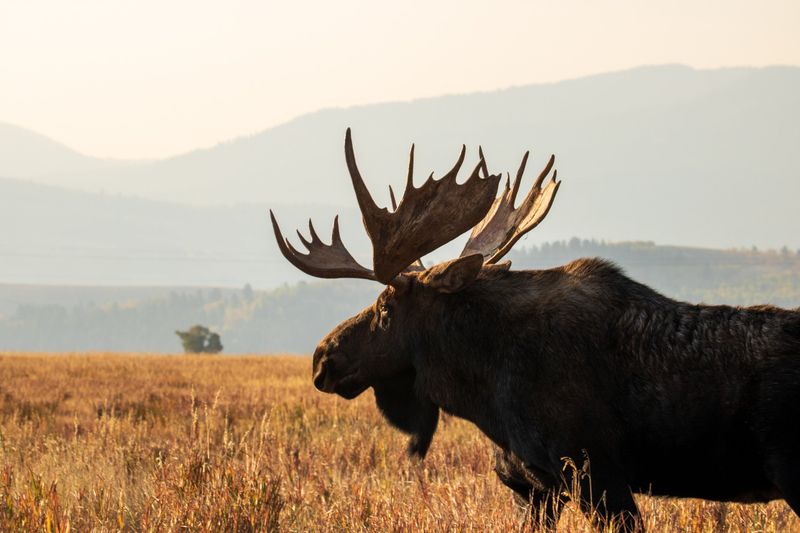
Towering above the rest, the moose is truly a giant of the forest. With antlers that spread up to six feet, males are especially impressive during the rutting season.
Known for their solitary nature, moose are often seen grazing in wetlands, their preferred habitat. Despite their size, they can move silently through the underbrush.
Fun fact: Moose are excellent swimmers and can hold their breath underwater for 30 seconds. Their long legs make them adept at traversing marshy areas, where they feast on aquatic plants.
Elk
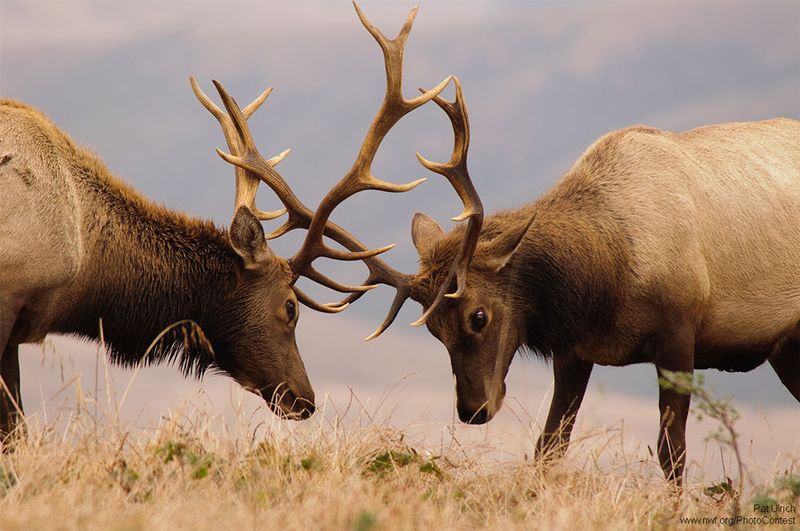
Elk, or wapiti, are known for their haunting bugle calls that echo through the valleys in autumn. These majestic creatures thrive in mountainous regions and open forests.
With a social structure that includes large herds, elk are a common sight in places like Yellowstone. Their antlers grow anew each season, showcasing their strength and vitality.
Did you know? Elk were almost extinct in the early 20th century but were reintroduced successfully thanks to conservation efforts. Now, they are a symbol of wildlife recovery.
Mule Deer

With ears that resemble a mule’s, this deer is aptly named. Mule deer are noted for their distinctive bounding leap, known as stotting, which enables them to escape predators.
These deer are often found in the western United States, where they inhabit rugged terrains and open spaces. Their keen senses and agility help them survive in diverse environments.
Fun fact: Mule deer have a unique two-part digestive system that allows them to extract nutrients efficiently from tough plant material.
White-tailed Deer
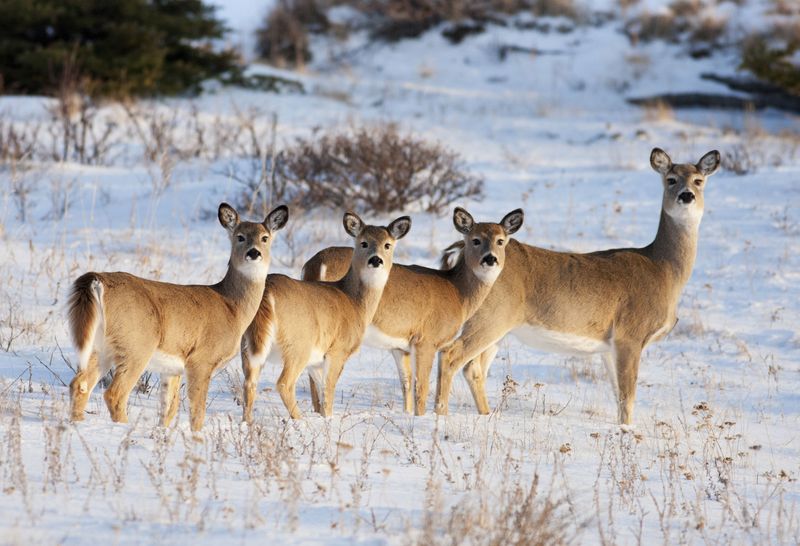
Famous for their white tails that flash when alarmed, these deer are among the most adaptable in North America. They are found from Canada to South America, thriving in diverse habitats.
White-tailed deer are crepuscular, most active during dawn and dusk. Their keen eyesight and sense of smell help them navigate their environment with ease.
Did you know? White-tailed deer can run up to 30 miles per hour and leap over obstacles eight feet high, making them experts at evading threats.
Caribou
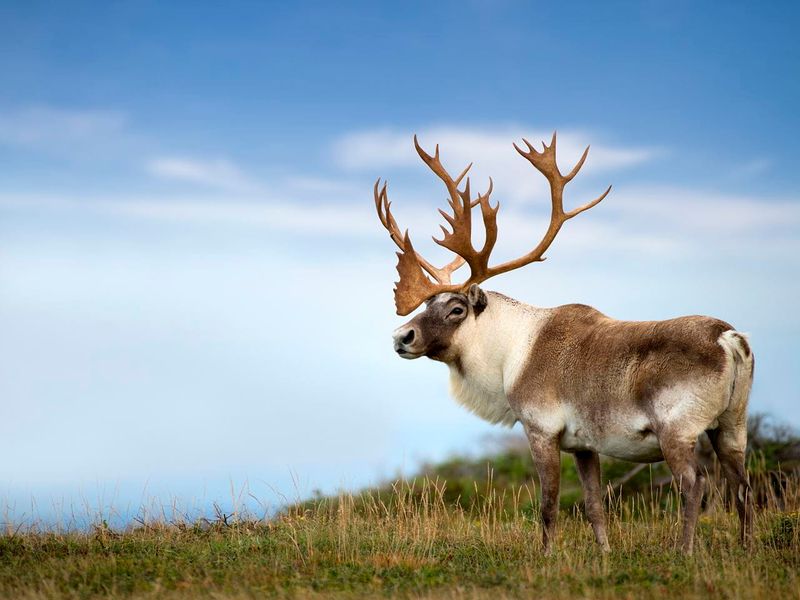
Caribou, also known as reindeer in Europe, are famed for their epic migrations that span hundreds of miles. They travel in herds, moving from wintering grounds to calving areas each year.
These deer are well adapted to cold environments, with hollow hair that provides insulation in frigid temperatures. Their large, concave hooves act like snowshoes, distributing their weight across snowy surfaces.
Fun fact: Both male and female caribou grow antlers, unlike most other deer species where only males have them.
Black-tailed Deer
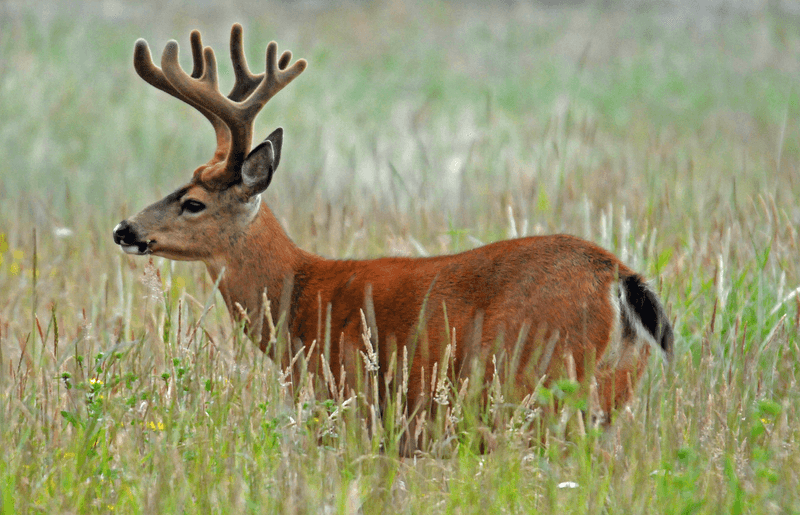
Closely related to the mule deer, the black-tailed deer inhabits the coastal regions of the Pacific Northwest. Its distinctive black tail sets it apart from its relatives.
These deer are browsers, feeding on a variety of shrubs and plants native to their forested habitats. They prefer the dense understory that provides both food and cover.
Did you know? Black-tailed deer play a crucial role in shaping the vegetation patterns of their ecosystems through their browsing habits.
Axis Deer

Originally from India, the axis deer now thrives in parts of the US, particularly Texas. Known for their striking spotted coats, these deer are a sight to behold.
Axis deer are social animals, often found in herds. Their vocalizations include loud barks used to communicate and alert others in the group.
Did you know? Despite their exotic origins, axis deer have adapted well to their new environments, often outcompeting native species for resources.
Sika Deer

Sika deer, with their charming calls and delicate spots, are a delight to encounter. They were introduced to the US and can now be found in specific regions like Maryland.
These deer are versatile, flourishing in both forested and open habitats. Their diet includes a variety of plants, making them adaptable foragers.
Fun fact: Unlike other deer, sika are known to whistle, a unique vocalization that adds to their distinctive character.
Red Deer

Red deer are among the largest deer species, with stags boasting a regal presence during the rut. They are primarily found in the northeastern US and are a symbol of strength and grace.
These deer prefer woodlands and grasslands, where they graze on grass, leaves, and young shoots. Their antlers are impressive, growing larger each year.
Did you know? The red deer’s roar can be heard for miles, serving as a call to mates and a challenge to rivals during the breeding season.
Fallow Deer
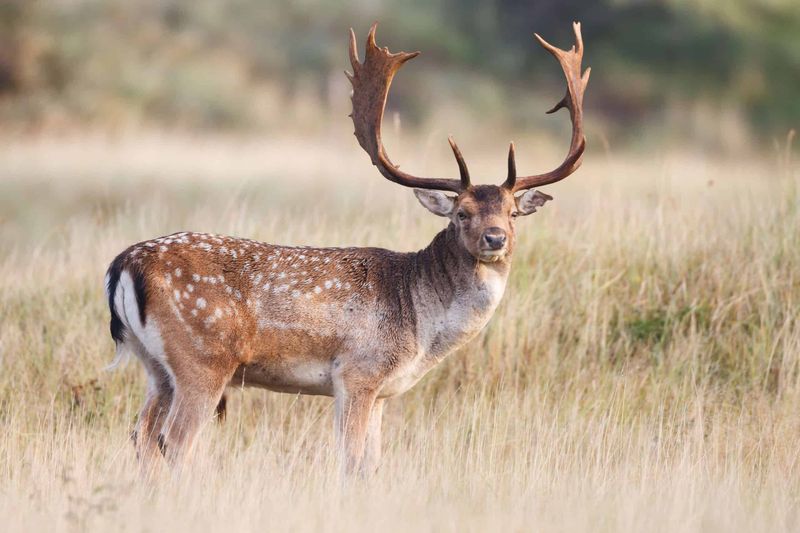
Fallow deer, with their unique palmate antlers, are a captivating sight. Introduced to North America, they have adapted to various landscapes, including parks and estates.
These deer are social and often form groups called ‘leks’ during mating season, where males display to attract females. Their varied diet and adaptable nature make them resilient survivors.
Fun fact: Fallow deer have a rich history, with origins dating back to ancient Rome, where they were prized for their beauty and grace.
Coues Deer
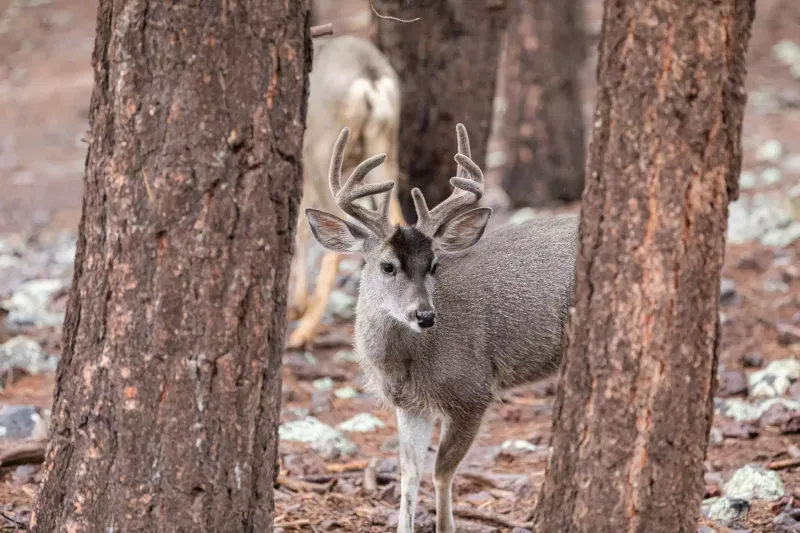
The Coues deer, a subspecies of the white-tailed deer, is adapted to the arid landscapes of the American Southwest. These small and elusive deer are adept at surviving in harsh conditions.
With large ears and sharp senses, Coues deer are constantly on the lookout for predators. They are most active during the cooler parts of the day, avoiding the midday heat.
Did you know? Despite their small size, Coues deer are known for their agility and can navigate steep, rocky terrains with ease.
Pere David’s Deer
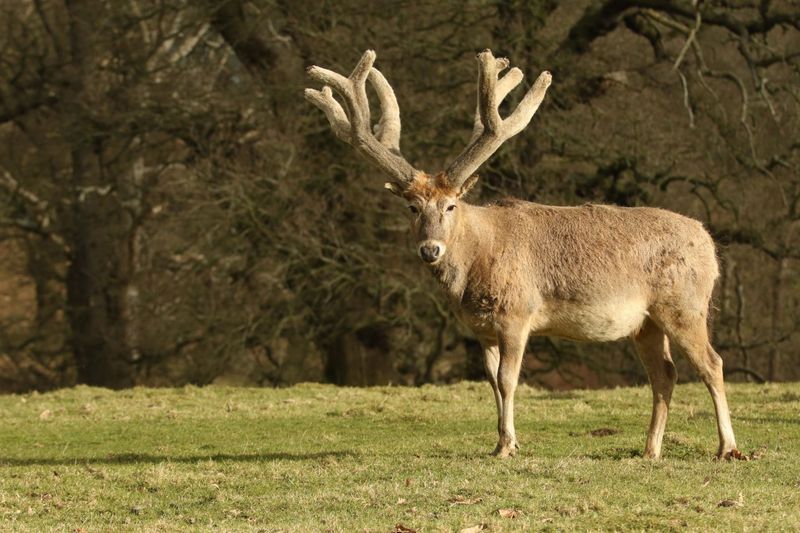
Once on the brink of extinction, Pere David’s Deer has made a remarkable comeback. This deer, native to China but thriving in American conservation parks, is known for its unusual appearance and affinity for water.
Its large, splayed hooves are perfect for marshy habitats, allowing it to navigate through wetlands with ease. The males boast unique antlers that resemble a sprawling tree, adding to their distinct charm.
Pere David’s Deer are often seen grazing near water bodies, their reflection shimmering in the ripples. Their story is one of hope and resilience, a testament to conservation efforts around the world.
Key Deer

Endemic to the Florida Keys, the Key deer is a diminutive wonder of the deer world. Once critically endangered, these small deer have rebounded, captivating all who encounter them.
Their compact size allows them to weave through dense foliage with ease, and they are often seen near water sources. Key deer are cherished residents of their island habitat.
Did you know? The Key deer is the smallest subspecies of the white-tailed deer, standing just about two feet tall at the shoulder.
Tule Elk

Standing tall amidst the open fields of California, the Tule Elk is a remarkable sight. Known for its smaller stature compared to other elk, this species captivates with its elegant antlers and graceful movements. Often spotted in herds, they graze peacefully, embodying the tranquility of their habitat.
Their coats change with the seasons, adding to their mystique. The males, with their impressive antlers, are particularly striking during the fall rut. These antlers, a symbol of strength, are shed each year, only to regrow larger and more ornate.
Despite their size, Tule Elk are agile and swift, able to navigate their environment with finesse. They are a true testament to nature’s adaptability and beauty.

